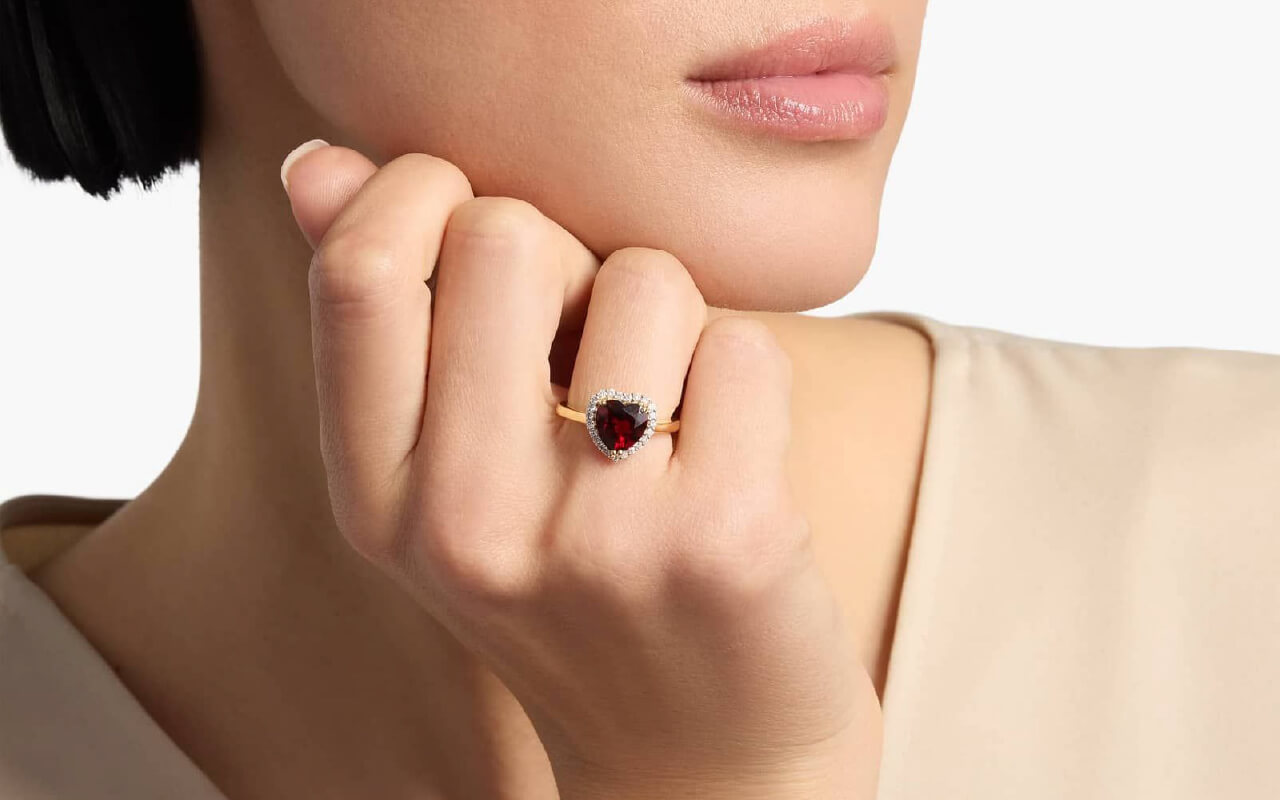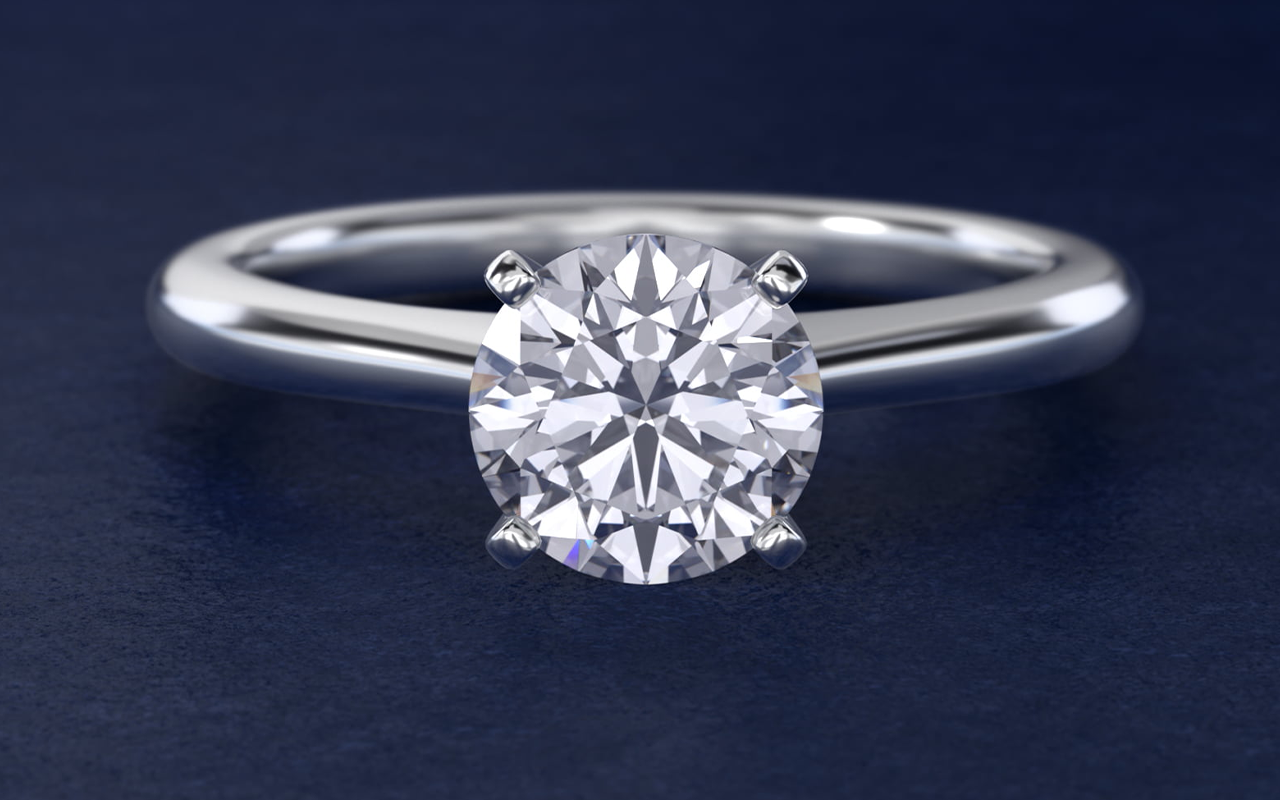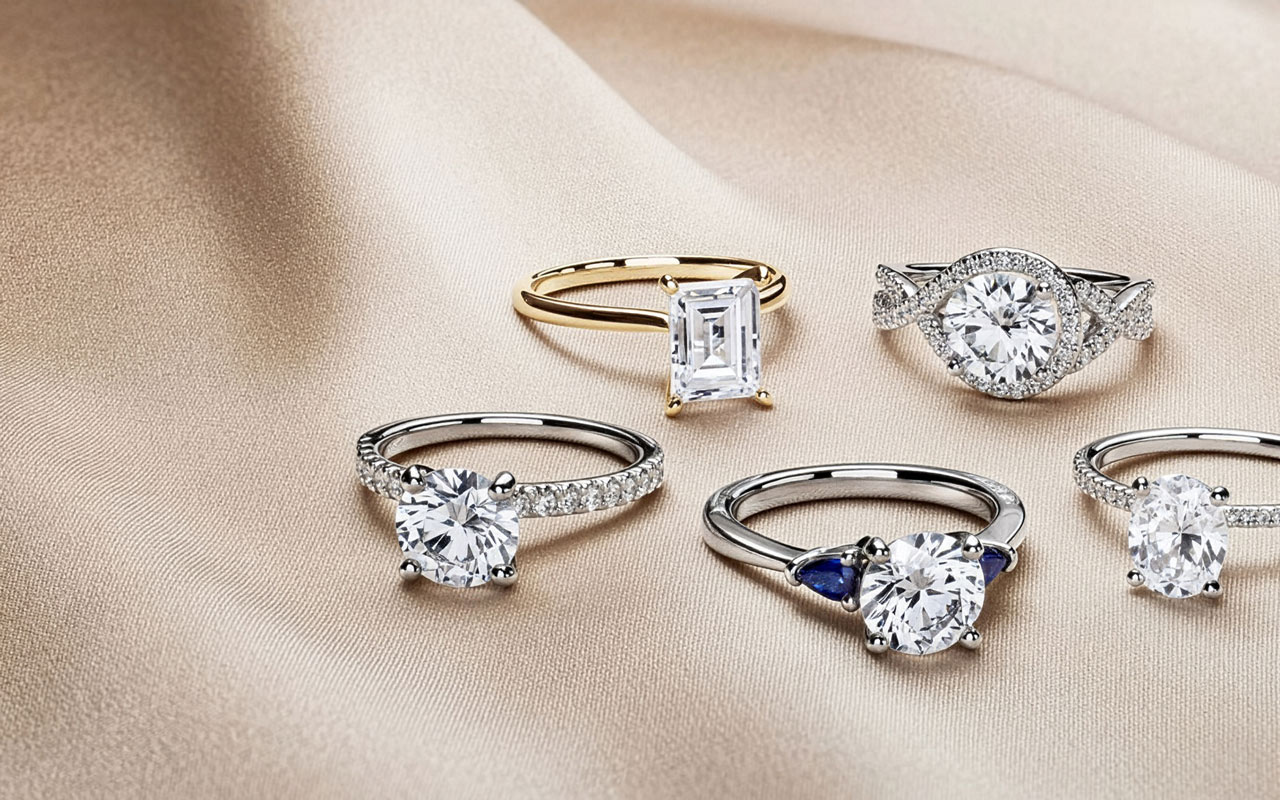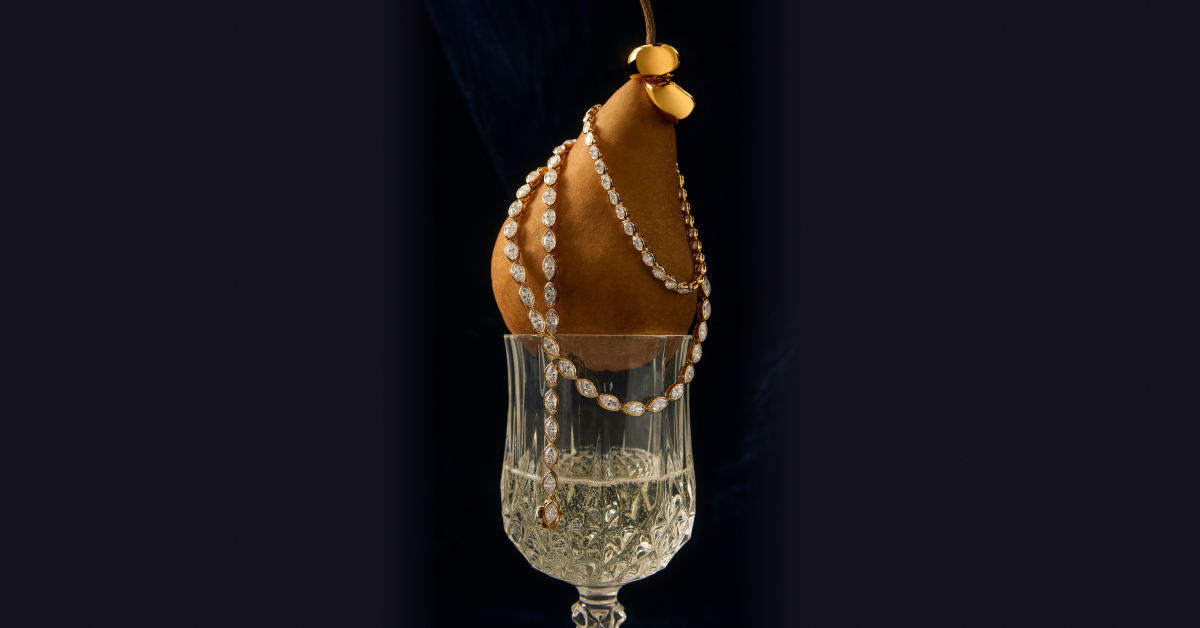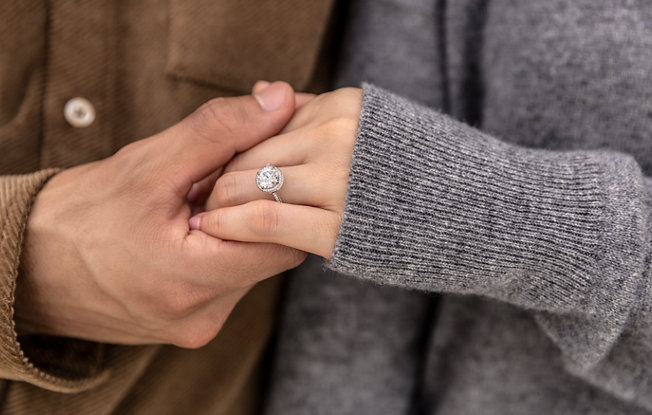
While the World Diamond Council confirms that more than 99 percent of diamonds sold today are responsibly sourced, not every diamond is conflict-free. In fact, “blood diamonds” hold many dangers for communities around the globe.
Although diamonds are a classic engagement ring centerpiece, not every stone sparkles the same. Here’s what you need to know when it comes to choosing conflict-free diamonds.
What is a Blood Diamond?
Conflict diamonds or blood diamonds are gems with unethical origins. The term “blood diamond” came about due to the negative consequences of diamond mining in war zones. Often, diamonds from a handful of countries in Africa carry this label.
Blood diamonds typically come from war-affected areas. They might result from illegal trade, and the workers who mine them are typically treated poorly and are underpaid. Many diamond mines use child labor in their operations. Others use intimidation and threats to keep an unpaid workforce laboring.
How Long Have Blood Diamonds Been Around?
The diamond industry uncovered the existence of blood diamonds in the 1980s. At that time, an estimated 21 percent of diamonds were illegal or unethical in nature. With civil wars throughout the 1980s, 1990s, and into the 2000s, rebel groups occupied diamond mines to fund their actions.
At the same time, these frightening groups intimidated local people, massacred entire villages, and injured millions of people, confirmed Amnesty International. The film Blood Diamond explored the events surrounding the diamond trade in Africa, bringing much-needed attention to the subject.
What Does a Blood Diamond Look Like?
While the diamond in Blood Diamond was a rare (and valuable) pink diamond, blood diamonds typically look no different than responsibly sourced diamonds. Blood diamonds are indistinguishable from conflict-free diamonds in terms of appearance.
The primary difference between blood diamonds and conflict-free ones is that responsibly sourced diamonds come with paperwork confirming their origins.
Why Are Blood Diamonds So Bad?
Blood diamonds affect both human rights and environmental safety. When rebel or terror groups procure diamonds, they usually do so by force. Rather than buying diamonds and paying fair wages, terrorist groups steal or coerce the diamonds from the miners.
Environmental issues also arise from conflict diamonds. Especially in poorer or war-torn countries, it’s not always feasible for the people working in mines to follow environmental protection protocols. Working in mines is also dangerous for not only the people on the job but also those in nearby communities.
Because diamonds are so valuable, many terrorist organizations and rebel groups seek them out. This means terror and violence in many poverty-stricken communities. Fortunately, many international groups moved to significantly reduce the number of blood diamonds on the market.
Today, experts say that over 99 percent of diamonds on the market are conflict-free. But until that number reaches 100 percent, human rights groups and diamond retailers have pledged to continue making changes that will help stop unethical diamond mining.
How the Diamond Industry Stops Unethical Diamond Mining

Diamond retailers like Blue Nile are passionate about stopping unethical diamond mining. To help protect everyone in the global diamond industry, jewelers can take steps like following the Kimberley Process, choosing responsible mining practices, and avoiding diamonds from troubled areas.
The Government Implemented the Kimberley Process
In 2000, the World Diamond Congress established the Kimberley Process to vet diamonds that crossed international borders. With this system, only a Kimberley certified diamond can pass through international airports.
The paperwork that the Kimberley Process requires confirms that the diamonds are conflict-free and responsibly sourced. Before any diamond reaches a US retailer’s shelves, the US Customs Service checks the certification paperwork.
Retailers Choose Responsible Miners (and Mining Practices)
The responsible sourcing of diamonds relies on multiple checkups and processes. Along with receiving diamonds that have passed through the Kimberley Process, jewelers also observe high standards to ensure conflict-free diamonds.
For reputable jewelers, choosing responsible miners and ensuring they follow thoughtful mining practices is essential.
Responsible mining means that mining organizations focus on human rights and protecting the environment. Responsible sourcing of diamonds also means skipping over suppliers that source diamonds in questionable areas.
Jewelers Can Be Choosy About Diamond Origins
While following the Kimberley Process is one way to ensure conscious standards, many jewelers go beyond paperwork requirements. For example, Zimbabwe’s Marange diamond district has a reputation for many horrendous human rights abuses.
Diamonds from this area are not conflict-free. So, jewelers can support responsibly sourced diamonds by refusing to purchase gems of questionable origins, whether from the Marange district or elsewhere.
Diamond Retailers Follow Additional Practices
Reputable diamond dealers know how important responsible practices are when sourcing gems for engagement rings, wedding bands, and anniversary jewelry. Going beyond international statutes and diamond origins, retailers like Blue Nile aim for higher standards.
Jewelers shouldn’t stop at purchasing diamonds with Kimberley certification. Retailers can also choose partnerships with mines that offer safe environments for their workers. Many workers earn low wages and work in dangerous conditions, but jewelers can affect change by refusing to work with mines that treat workers poorly.
Retailers can also investigate the mines they work with, ensuring that no child labor is used at the sites. Being choosy about their diamond vendors may limit jewelers’ options, but it helps ensure conflict-free gemstones that offer peace of mind.
What About Metals?
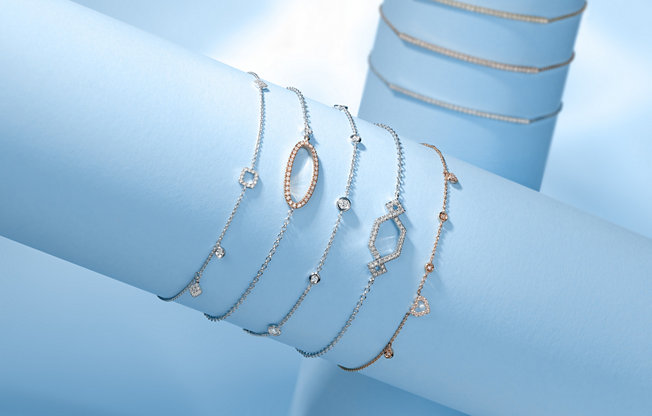
Jewelers that prioritize conflict-free diamonds care about conflict-free metals, too. Refusing to accept dirty gold is one way that Blue Nile and other jewelers commit to improving mining practices. Like blood diamonds, dirty gold can cause environmental and social issues. Gold mining can be destructive, harming the environment and putting local populations at risk. Improper mining practices can mean contaminated water and damaged ecosystems.
To combat the effects of dirty gold, Blue Nile supports responsible mining of gold and other precious metals. All Blue Nile gold comes from high-quality suppliers that care about workers and the environment.
Why Should I Buy Conflict-Free Diamonds?
When it comes to seeking conflict-free diamonds, many consumers are lulled into a false sense of security. If most diamonds on the market are responsibly sourced, what’s the harm in buying from any jeweler with the right gemstone in stock?
The answer is there’s no reason not to buy conflict-free diamonds; here’s why.
Conflict-Free Diamonds Aren’t More Expensive
Because all diamond retailers must follow national guidelines, there is no price-gauging for conflict-free diamonds. You won’t see a price hike for conflict-free diamonds. In fact, blood diamonds often travel via the black market, fetching higher prices than store-bought gems.
Of course, some diamonds are more expensive than others due to their size. But the cut also affects a diamond’s price. Generally, a fancy-shaped diamond is a better fit for smaller budgets. In contrast, round diamonds are typically the priciest cut. Elongated shapes appear larger yet are fewer carats overall, so they are more affordable.
Regardless, your conflict-free diamond won’t affect your wallet any more than a blood diamond would. But of course, that’s not the only consideration when shopping for a diamond engagement ring.
Conflict-Free Gems Are Heartfelt
Another reason to choose a conflict-free diamond is that the gem will remain a symbol of your love and commitment to your partner for the rest of your lives. When it comes to deciding your engagement ring purchase, choosing an untainted diamond is a priority. With a clear conscience and a beautiful ring in your pocket, you can truly enjoy your engagement proposal and the celebration and marriage that follow.
You and your partner can also ensure you’re preventing the mistreatment of workers across the globe. Responsibly sourced gemstones are a meaningful way to begin your partnership while preventing harm to others.
A Conflict-Free Diamond Is Beautiful
Conflict-free diamonds don’t look any different from blood diamonds. Each gem undergoes inspection, cutting, polishing, and more—there is no “ugly” diamond in the bunch. Whether you’re choosing from a collection of diamond engagement rings, diamond earrings, or other types of diamond rings for an anniversary or birthday, you won’t notice anything off-putting about conflict-free diamonds.
Are Conflict-Free Diamonds Responsible?
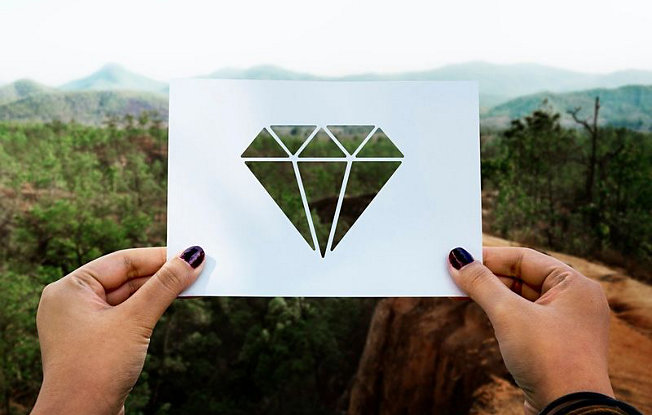
Source: Rawpixel
While cutting off funds to blood diamond mines is one way to reduce the number of conflict diamonds in circulation, many fear it’s not sustainable. After all, how can the diamond industry survive without an influx of cheap gems?
In fact, the diamond industry’s focus on removing blood diamonds from the equation means the industry itself is more sustainable. Requiring mines to follow eco-friendly guidelines makes a huge difference.
Plus, mines that use child or unpaid labor are only perpetuating poverty. Collaborating with diamond mines that prioritize their people and their environmental practices makes a difference. In this way, diamond retailers are helping to preserve the future of the industry.
Just as you want a diamond ring that will last forever, diamond jewelers want to ensure their craft can continue to flourish—without hurting the environment or other humans.
How Can Be Sure I'm Purchasing Conflict-Free Diamonds?
Finding the right engagement ring goes beyond selecting the right diamond shape or ring setting. And although the World Diamond Council has made significant progress in eradicating blood diamonds, some still exist. So, how can you make sure you’re buying conflict-free diamonds?
Choose a Diamond Retailer Who Takes a Stance
Many diamond retailers skirt around the issue of blood diamonds. If you’re hoping to purchase conflict-free diamonds, this isn’t the way to find them. When a jeweler avoids answering questions about their diamond sources or cannot provide the appropriate paperwork, it’s time to move on.
Choosing a diamond retailer that only offers Kimberley-certified gemstones is an excellent start. However, jewelers like Blue Nile go a step further. We aim to address environmental and social issues surrounding conflict diamonds.
Select Diamonds from Conflict-Free Areas
Not all areas of Africa are home to blood diamond mines, but many places are. Countries like Ivory Coast, Angola, Sierra Leone, Liberia, Guinea, and Guinea Bissau have produced many blood diamonds, especially during civil wars in those areas.
While it’s possible to obtain conflict-free diamonds from Africa, it’s essential to know the true source. Supporting Africa’s people and their ability to provide for their communities and families is a worthwhile cause, so many retailers work with reputable mines in Africa.
But in addition to certified conflict-free diamonds from Africa, consumers can also shop for diamonds from other locations.
Australia, Canada, and Russia are also home to many diamond mines. Blue Nile, for example, procures many diamonds from Canada. Canadian diamond production enforces strict environmental guidelines. They also require that employees have favorable and fair working conditions.
Ask for Documentation
All US diamond retailers must follow the Kimberley Process. Therefore, each diamond has a paper trail. If you have doubts about a jeweler’s honesty or the quality of its diamonds, you can ask for documentation.
Many jewelers are happy to discuss their responsibly sourced diamonds. They will share the mines they work with and even their diamond collections’ travel routes. For retailers who care about preventing blood diamonds from entering the market, it’s no trouble. In fact, it’s easy to be passionate about truly conflict-free gemstones.
Conflict-Free Diamonds at Blue Nile
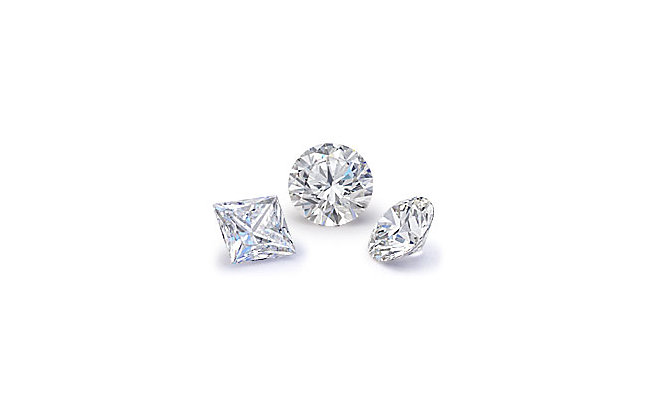
When you start shopping for diamond jewelry, it’s essential that you find a jeweler you can trust. Blue Nile offers a vast diamond collection in accordance with the Kimberley Process. Blue Nile also maintains a zero-tolerance policy when it comes to conflict diamonds.
With diamonds from Africa, Australia, Canada, and Russia, Blue Nile has a full collection to suit every consumer’s needs. Whatever type of jewelry you’re shopping for, there’s a conflict-free diamond that’s perfect for the occasion.





